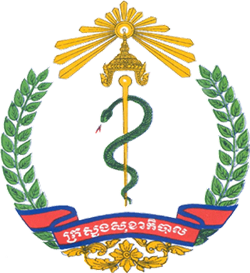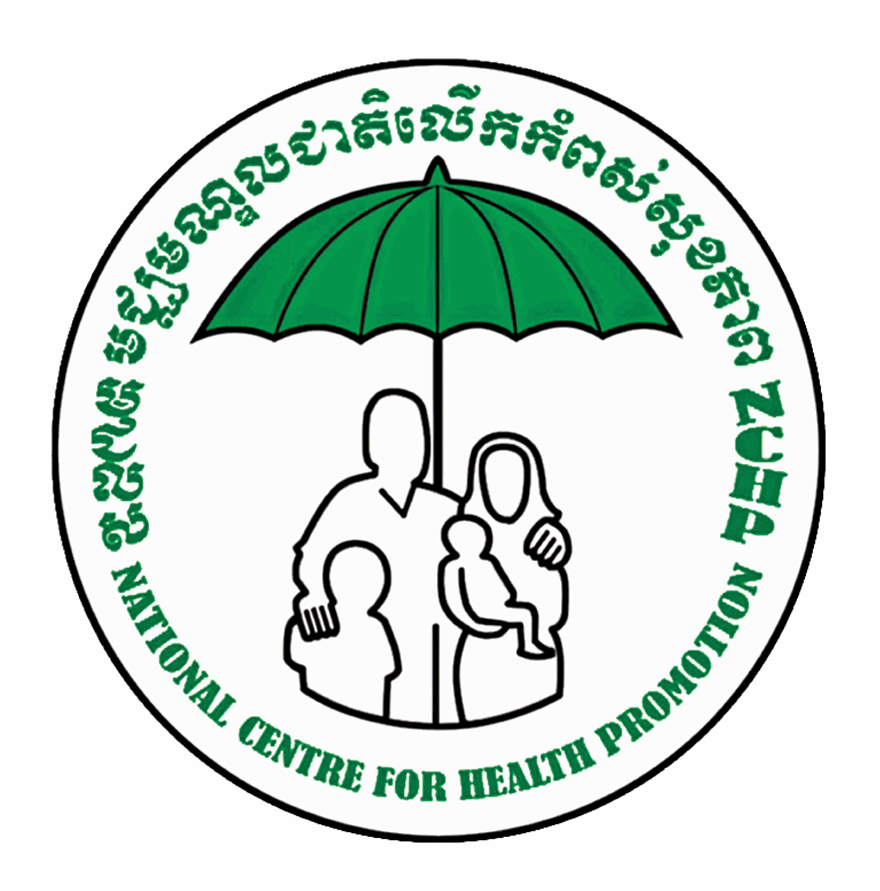The communication relating to communicable diseases that the National Centre for Health Promotion has been using since 2020 is risk communication. The National Centre for Health Promotion, an executing agent of the Ministry of Health, assigns an executing team for training and for public relation to join in the making of educational tools concerning the communications and improvements of community involvements to respond to the COVID-19 pandemic. The achievements include:
Strategies:
To curb widespread infection in the community, the National Centre for Health Promotion has prepared strategic plans as follows:
- Prepare messages and tools for the COVID-19 pandemic
- Communications
- Strengthen communication involvement to respond to the COVID-19 pandemic
- Improve the ability of health officials and authorities in 25 provinces/cities on health education and the use of health education tools for the COVID-19 pandemic
- Visit and monitor how health education tools are used in 25 provinces/cities
Achievements:
1. Production, education and communication
By implementing risk communication, the National Center for Health Promotion has produced and co-produced 144 tools in the form of educational advertisements on the radio and TV and in songs, books, billboards, banners and brochures. Messages include:
- Wash hands with soap and clean water, alcohol or hand sanitizer
- Maintain respiratory hygiene by covering one’s mouth with a tissue, Krama or elbow when coughing or sneezing
- Accept and adapt to New Normal Life
- How COVID-19 spreads and social distancing
- Don't discriminate
2. Media
Words have been shared on social media such as Facebook, Youtube and Telegram, TV, radio, LED and banners and through authority networks and health officials in 25 provinces/cities as well as in the form of CD and USB.
With the messages made and shared widely, information is communicated quickly and through the effort of local authorities and officials, civilians are aware of the COVID-19 pandemic.
3. Strengthening community engagement
Instructions on measures to prevent and curb the spread of the COVID-19 pandemic were prepared for the Health Center Management Committees and Village Health Support Group. These instructions guided the community leaders on how to control the COVID-19 pandemic based on actual scenarios, for example, scenarios 1, 2 or 3.
With the support of WHO, the National Center for Health Promotion has prepared strategies and tools for health monitoring with community involvement, aiming at directing working teams within departments of health and operational districts, health centers and the community to work together to create a reporting system about suspicious cases of COVID-19 and other public health emergencies. This is so individuals could visit a health center in good time and the health center could respond to the community in good time too, when it comes to fake news and rumors about the COVID-19 situation.
4. Building capacity of authorities at the district/commune level to respond to the COVID-19 pandemic
We organized training on health education and the use of health education tools for COVID-19 for health officials and authorities in 8 provinces/municipalities as joined by 240 participants, 141 being female participants. The training focused on risk communication and the use of health education tools and communication skills to respond to community issues.
According to the findings of our monitoring system, sub-national level authority in districts and communities as well as local health officials have gained more knowledge, skills and experience in doing their job in the fight against COVID-19. In addition, people in both rural and urban areas understand the methods to protect themselves again COVID-19.
5. Visit to educate and monitor the use of health education tools
We visited and monitored the use of health education tools by assisting authorities and health officials in educating the community and implementing a new normal life as well as obtaining feedback or information that would help address the community issues under their administration coverage. In this matter of urgency, we have made 25 visits to 23 provinces, including Prey Veng, Takeo, Kampot, Kampong Speu, Kep, Preah Sihanouk, Koh Kong, Stoeng Treng, Kratie, Ratanakiri, Mondul Kiri, Preah Vihear, Pailin, Battambang, Siem Reap, Banteay Meanchey, Oddar Meanchey, Pursat, Kampong Chhnang, Kampong Thom, Tbong Khmum, and Kampong Cham. The achievements include:
- Authorities and health officials communicated COVID-19 information with the community through direct education and using handheld megaphones.
- The health education tools were distributed and displayed at hospitals, health centers, institutions, schools, pagodas, quarantine centers, and downtowns.
- Locations to be used as quarantine centers in those provinces were checked and managed by the authorities.
- Special care was given to the assignment and support of the campaign to prevent the spread of the COVID-19 pandemic at all provincial levels, including the governors of the provinces, districts and communities as well as managing migrant workers and travelers through the borders and sending the workers to other locations/provinces.
With the support of the WHO, we visited ten provinces to educate, communicate, monitor and distribute health education tools about COVID-19, provinces being Prey Veng, Banteay Meanchey, Kampong Cham, Pailin, Tbong Khmum, Oddar Meanchey, Svay Rieng, Kampong Speu, Pursat and Kampong Chhnang. This covered four provincial hospitals, two referral hospitals, fourteen health centers, nineteen quarantine centers and twenty villages. Our results are as follows:
- Interviewed provincial departments of health, provincial hospitals, referral hospitals, health centers and small villages.
- Distributed the COVID-19 education tools with the support of NCHP, WHO, World Vision, ARD, ADRA, PSI, CDC and other ministries
- Provided COVID-19 education videos and posters so that they can be displayed at provincial hospitals, referral hospitals and health centers while ads on big billboards are on display in the downtowns and across communities.
- Checked the centers used for 14-day quarantine and health centers specifically used for COVID-19 treatment in those ten provinces.
- Guided health officials to communicate with the community about hand washing, mask wearing, 1.5m social distancing
- Active participation from health officials, local authority, Commune Committees for Women and Children (CCWC), village support groups (VSG) in undertaking their routine work in the communities including displaying IEC materials, health education, distributing booklets and solving various issues and concerns.
Overall impact from the effort by the National Centers, Ministry of Health, and other ministries as well as all level of authorities is seen by the increase among people in washing hands, wearing a mask, and social distancing. There is also a decrease in diarrhea and respiratory cases.


